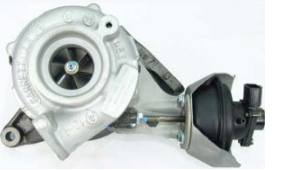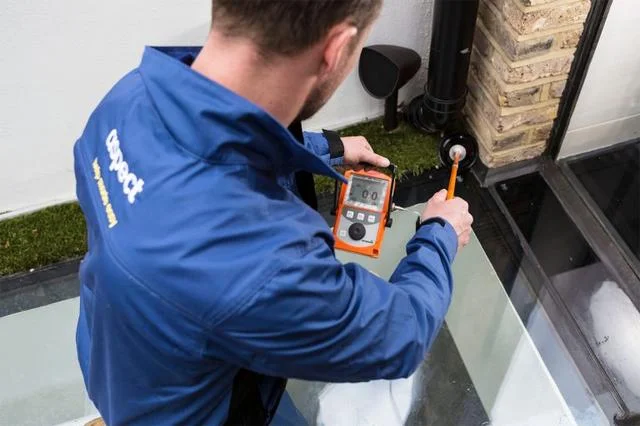Turbo Refurbishment: Maximizing Engine Efficiency and Longevity

Turbochargers are no longer confined to high-performance sports cars. Today, they are an integral part of mainstream vehicles, helping manufacturers meet modern demands for fuel economy, reduced emissions, and strong engine performance. However, like any mechanical component, a turbocharger is subject to wear. Instead of replacing it entirely, many drivers are turning toward turbo refurbishment as a smart and sustainable solution.
Why Turbochargers Matter
A turbocharger is essentially an air pump driven by exhaust gases. It compresses incoming air, pushing more oxygen into the engine cylinders. More oxygen means more efficient combustion, which translates to:
-
Enhanced power output from smaller engines.
-
Better fuel efficiency on long and short journeys.
-
Reduced emissions that comply with modern regulations.
Without a functioning turbo, drivers quickly notice sluggish acceleration, increased fuel use, and more smoke from the exhaust. This makes maintaining turbochargers crucial for both performance and environmental reasons.
What Turbo Refurbishment Involves
Turbo refurbishment is a comprehensive restoration process that brings a worn turbocharger back to near-original performance standards. Unlike a temporary repair that addresses only immediate symptoms, refurbishment involves a deeper approach that extends the lifespan of the turbo.
At its core, refurbishment focuses on renewing worn components, checking for damage, rebalancing moving parts, and ensuring the unit performs as designed. This gives drivers the confidence of restored efficiency without unnecessary waste.
The Benefits of Turbo Refurbishment
1. Restored Performance
Over time, a failing turbo reduces engine response. Refurbishment reverses this decline, bringing back the crisp acceleration and power delivery drivers expect.
2. Environmental Sustainability
By refurbishing rather than replacing, valuable materials are reused. This reduces industrial waste and the environmental impact of new production.
3. Cost Savings
New turbochargers are precision-engineered and expensive. Refurbishment provides a practical, long-term solution at a fraction of the environmental and economic cost.
4. Reliability for Fleets and Individuals
Whether maintaining a single vehicle or a fleet of trucks, refurbished turbos help keep engines dependable while avoiding extended downtime.
Signs That Refurbishment May Be Needed
Turbochargers often give clear warnings when problems develop. Some of the most common signs include:
-
Reduced engine power: Sluggish acceleration and slower response.
-
Excessive exhaust smoke: Blue smoke suggests oil leaks; black smoke indicates poor combustion.
-
Whining or whistling noises: High-pitched sounds linked to damaged bearings or air leaks.
-
Higher fuel consumption: Reduced efficiency from a failing turbo.
-
Dashboard warning lights: Modern vehicles may trigger alerts when boost pressure drops.
Ignoring these symptoms can lead to more severe engine damage, making early refurbishment essential.
Technical Aspects of Turbo Refurbishment
A modern turbocharger is a complex piece of machinery. To spin at speeds of up to 200,000 revolutions per minute, every component must be perfectly aligned and balanced. Key aspects of refurbishment include:
-
Precision balancing: Prevents damaging vibrations at high speeds.
-
Bearing and seal replacement: Ensures smooth operation and prevents oil leakage.
-
Turbine and compressor examination: Worn blades or foreign object damage can affect airflow efficiency.
-
Variable-geometry systems: Common in modern diesels, these require careful recalibration for accurate boost control.
-
Electronic actuators: Advanced turbos often include electronic components that must be tested and restored.
The precision involved means that refurbishment should only be carried out with specialist equipment and technical expertise.
The Wider Impact of Refurbishment
For Drivers
Refurbishment restores the original driving experience—responsive acceleration, smooth power delivery, and improved fuel economy.
For Businesses
Fleet managers benefit from reduced downtime and predictable costs, keeping trucks and vans reliable over long service lives.
For the Environment
Each refurbished turbo means fewer raw materials mined, less manufacturing energy consumed, and less waste ending up in landfills.
The Role of Specialists
Turbochargers are highly specialized components, and refurbishment requires advanced testing equipment and expert knowledge. Attempting to address turbo issues without proper expertise can worsen problems and reduce performance further. The most reliable results come when you find a specialist near you who understands the specific requirements of turbo refurbishment and can ensure the unit is restored to safe, efficient operation.
The Future of Turbo Technology and Refurbishment
Turbochargers are evolving rapidly to meet the challenges of stricter environmental targets and the rise of hybrid systems. Some of the latest advancements include:
-
Electric turbos: Using electric motors to eliminate lag and improve response.
-
Variable-geometry technology: Allowing precise control over airflow for maximum efficiency.
-
Integration with hybrid drivetrains: Optimizing power delivery while keeping emissions low.
As these systems become more advanced, refurbishment will play an increasingly important role in keeping vehicles efficient and sustainable. Rather than discarding complex technology prematurely, refurbishment ensures that advanced turbo systems continue to operate as intended.
Conclusion
Turbo refurbishment represents more than just a practical alternative to replacement. It combines performance restoration, sustainability, and financial efficiency into a single solution. By extending the life of turbochargers, refurbishment supports everyday drivers, commercial operators, and the environment.
In a world where engines are expected to deliver more power while consuming less fuel, turbochargers are indispensable. Keeping them in peak condition through refurbishment is not only smart maintenance—it is a forward-looking choice that aligns with both economic and environmental priorities.







